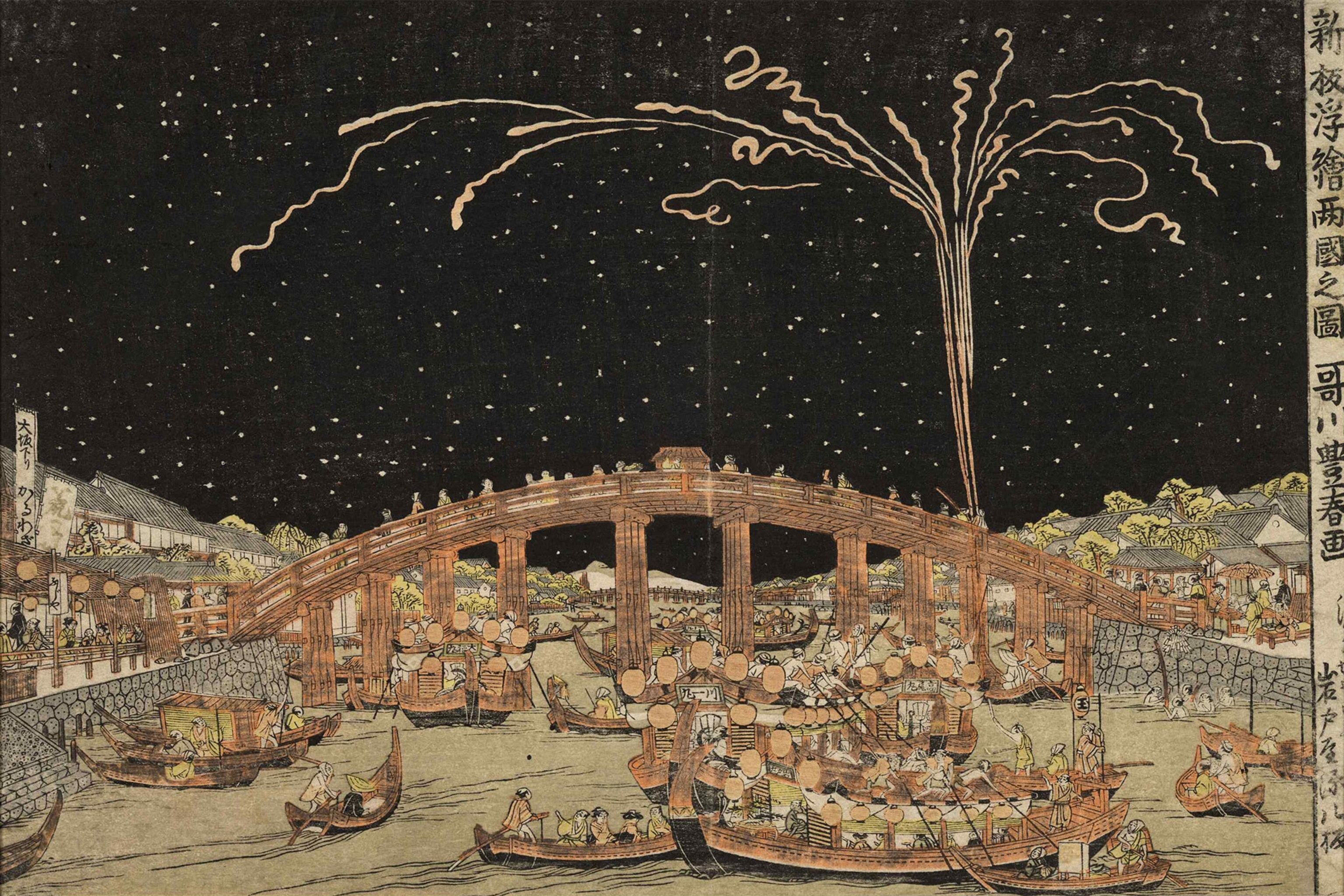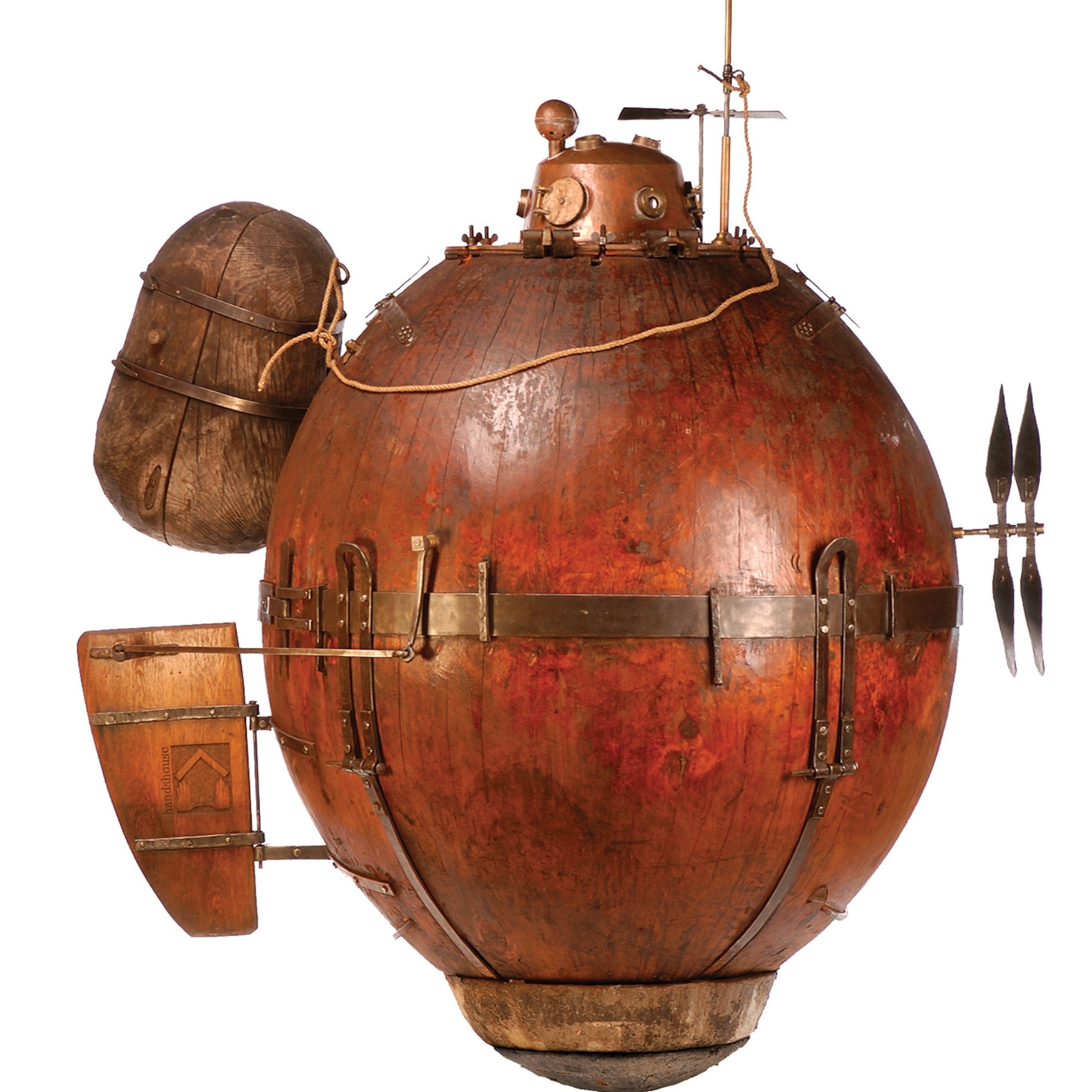As dusk sets on the Fourth of July, bursts of light, movement, and color bedazzle America’s skies. Fireworks—thousands of which launch from municipal festivals and backyards each Independence Day—are, for some citizens of the United States, quintessential emblems of nationalism.
But what makes these illuminations so patriotic? And how do the very first fireworks compare to the ones we launch today?
Well, the first fireworks were not American at all.
Chinese roots
Around 200 BC—millennia before Europeans landed in North America—people in Liyuan, China, created firecrackers by tossing bamboo stalks into pits of fire. Some say the resulting noise was intended to ward off evil spirits. Then, fast forward to 600 AD, Chinese alchemists took the practice a step further by devising a gun-powder remedy from substances like charcoal, sulfur, and potassium, which they stuffed inside the bamboo shoots and lit with a torch. This was later used as weaponry in the form of missiles.
As more cultures experimented with gunpowder, fireworks soared over borders and seas. European countries like Italy and Great Britain produced fireworks in the Middle Ages—albeit without bamboo—on holidays and occasions like royal weddings, coronations, and birthdays. And, a year after the United States of America declared independence on July 4, 1776, accounts from both John Adams and the Virginia Gazette say the former colonists launched fireworks to celebrate. (Read Nat Geo's guide to photographing fireworks.)
Family affairs
The vibrant, aerial displays that impress crowds today were derived in the 1830s, when the Italians combined metals with explosives to develop colored fireworks.
Around this time, family businesses such as Fireworks by Grucci and Zambelli Fireworks, now two of the United States’ largest and oldest firework companies, made modest names for themselves in Bari and Caserta, Italy, respectively. (See 25 dazzling photos of fireworks from around the world.)
These Italian firework families participated in activities like single-shell competitions—rocketing one firework into the sky and selecting a winner based on factors like design, sound, size, and color—says Phil Grucci, chief executive of Fireworks by Grucci.
By arranging the elements in different orders within the shell casing, the Italians also created recognizable shapes and drawings in the sky. “Like,” Grucci adds, “an American flag.”
And then, starting in the late 1800s, aerial fireworks migrated to the United States through the same passage as more than 12 million others—Ellis Island.
“My second great grandfather and my second great uncle came through Ellis Island with a shoe box full of formulas and a dream,” Grucci says, “not even a dollar, but a dream.”
George Zambelli, Sr. faithfully stowed his “pyrotechnic dream” in a similar way. He bound Zambelli’s firework formula inside a small black notebook, which stays locked in the family safe to this day, says George Zambelli, Jr., chairman of Zambelli Fireworks. Both businesses remain family-run and have performed at multiple presidential inaugurations and fourth-of-July celebrations.
Fireworks go high-tech
But while boxes and booklets still govern the foundation of the Italian displays, modern designs and technologies are taking fireworks to new heights—literally.
“The generation that I grew up in, the fifth generation, saw the industry and the art form and the display, and the technique go from lighting something with a flare, like you'd see on the side of the road, to lighting fireworks with electronics with a push of a button,” Grucci says. He now sets off fireworks from laptop computers. (Why you can't write messages with fireworks—yet.)
“The more outlandish, out of the box, exciting ideas that come along, the technology has got to be able to support that,” Grucci adds. “You're always allowing the design to drive the technology, not the other way around."
On January 1, 2018, Grucci and his team fired the world’s largest firework off the Burj Khalifa building in Dubai. The firework weighed 2,397 pounds and reached an apex of almost 4,000 feet.
Risks of the fun
Firework shows in other countries can be larger and more elaborate than in the United States, Grucci says. Back in the states, however, consumer firework sales have been sky-rocketing since 2000, says Julie Heckman, the executive director of the American Pyrotechnics Association.
Massachusetts is the only state that prohibits the sale of consumer fireworks— “And I don’t think John Adams would be very happy,” Heckman says.
But complying with government regulations and new tariffs poses challenges to family firework businesses across all states, many of which have stopped manufacturing or putting on shows all together, Heckman says.
Most of the regulations relate to environmental protection or health hazards from unsafe use.
Zambelli, who works as an ophthalmologist by day, is well aware of the physical dangers of fireworks. He has treated a few firework injuries in his time—he advises consumers to wear goggles and to set off shells one at a time—but, ironically, expects the number would be higher had he not been in the firework industry.
“I’m not on call over the Fourth of July,” Zambelli says.
Because on the week of the Fourth, all hands are on deck. Designers are sketching new displays and scoring shows to match musical arrangements, drivers are loading trucks and hauling shells to different launch sites across the country, managers are coordinating schedules with partners and state police, and technicians are fine tuning their systems for the dusk launch.
“It's a labor of love,” Zambelli says. “I had my two-year-old grandson at a major display in the Pittsburgh area a couple weeks ago, and you should have seen him light up at the spectacular fireworks display. He puts his hands up in the air and boom, boom, boom, boom. It's definitely in the blood.”
“When you're born in this family, you're introduced to the art form when you're an infant; when you’re in the fetal state,” Grucci says. “You live, eat, hear, and speak nothing but fireworks.”
Zambelli Fireworks will display 800 shows across the United States the week of the Fourth. Fireworks by Grucci will perform at the 2019 “Salute to America” festival at the Lincoln Memorial along with Phantom Fireworks.
You May Also Like
Go Further
Animals
- This ‘saber-toothed’ salmon wasn’t quite what we thoughtThis ‘saber-toothed’ salmon wasn’t quite what we thought
- Why this rhino-zebra friendship makes perfect senseWhy this rhino-zebra friendship makes perfect sense
- When did bioluminescence evolve? It’s older than we thought.When did bioluminescence evolve? It’s older than we thought.
- Soy, skim … spider. Are any of these technically milk?Soy, skim … spider. Are any of these technically milk?
- This pristine piece of the Amazon shows nature’s resilienceThis pristine piece of the Amazon shows nature’s resilience
Environment
- Are the Great Lakes the key to solving America’s emissions conundrum?Are the Great Lakes the key to solving America’s emissions conundrum?
- The world’s historic sites face climate change. Can Petra lead the way?The world’s historic sites face climate change. Can Petra lead the way?
- This pristine piece of the Amazon shows nature’s resilienceThis pristine piece of the Amazon shows nature’s resilience
- Listen to 30 years of climate change transformed into haunting musicListen to 30 years of climate change transformed into haunting music
History & Culture
- Meet the original members of the tortured poets departmentMeet the original members of the tortured poets department
- Séances at the White House? Why these first ladies turned to the occultSéances at the White House? Why these first ladies turned to the occult
- Gambling is everywhere now. When is that a problem?Gambling is everywhere now. When is that a problem?
- Beauty is pain—at least it was in 17th-century SpainBeauty is pain—at least it was in 17th-century Spain
Science
- Here's how astronomers found one of the rarest phenomenons in spaceHere's how astronomers found one of the rarest phenomenons in space
- Not an extrovert or introvert? There’s a word for that.Not an extrovert or introvert? There’s a word for that.
- NASA has a plan to clean up space junk—but is going green enough?NASA has a plan to clean up space junk—but is going green enough?
- Soy, skim … spider. Are any of these technically milk?Soy, skim … spider. Are any of these technically milk?
Travel
- Could Mexico's Chepe Express be the ultimate slow rail adventure?Could Mexico's Chepe Express be the ultimate slow rail adventure?
- What it's like to hike the Camino del Mayab in MexicoWhat it's like to hike the Camino del Mayab in Mexico

















